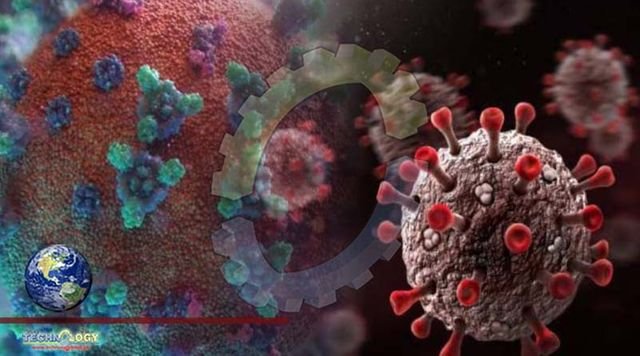Sars-CoV-2 continues to infect millions of people worldwide and cause an estimated 10,000 deaths per day, as the US alone approaches one million dead. It is widely expected to become endemic, remaining in circulation for the foreseeable future, and continuing to cause substantial numbers of hospitalisations and deaths, especially among vulnerable groups. ‘Covid kills about tenfold more people than flu, based on historical information,’ says Penny Ward, professor of pharmaceuticals medicine at King’s College London, UK.

Existing vaccines reduce the probability of severe disease, but do not protect against infection. Immunity also wanes within months, particularly against the newest emerging variants. This leaves room for companies to develop more effective antivirals and vaccines in the coming months or even years.
There are now three drugs to fight the virus directly: two taken orally and one intravenous. Pfizer’s Paxlovid (nirmatrelvir/ritonavir) inhibits a viral protease enzyme, and the tablets can reduce hospitalisation and death by around 60% when taken early. Lagevrio (molnupiravir), from Merck & Co and Ridgeback Therapeutics, mimics an RNA building block and introduces catastrophic errors in viral RNA. It can cut the risk of hospitalisation or death by around 30%.
But both have issues. Paxlovid includes ritonavir, which has pharmacogenetic boosting effects, notes Ward, but is incompatible with medications for heart disease, diabetes and other conditions. Molnupiravir cannot be given to pregnant women or children. ‘They’re not the perfect antivirals,’ says Ward. While the third option – Gilead’s Veklury (remdesivir) – might lower the risk of hospitalisation or death by 87%, it must be given intravenously. That leaves plenty of scope for new antivirals. ‘Mortality following hospital admission is between 25 and 40%, depending on the frailty of the individual,’ says Ward. Rapid diagnosis and prescription is also important for the drugs to be effective, which may be problematic as countries cut down access to testing.
There are a few candidate antivirals in development. Atea pharmaceuticals has a polymerase inhibitor, bemnifosbuvir (AT-537), that it continues to pursue, despite a setback with a phase 2 trial with mild-to-moderate patients that brought a collaboration with Roche to an end in October. ‘They are rejigging the trial design and continuing with development,’ says Ward. Meanwhile, Japanese biotech Shionogi has a protease inhibitor (S-217622) in phase 2a trials.
Since antivirals target internal proteins, which do not mutate as much as the spike protein targeted by antibodies, they are expected to hold up well against new variants, and possibly even other coronaviruses. Ward expects strong demand for effective antivirals, to the point pharmaceuticals where governments would stockpile these treatments, in the same way as flu antivirals. This offers a lucrative market for anyone with large quantities of new, improved antivirals. The US government has bought around 3.1 million courses of molnupiravir, for approximately $2.2 billion, for example.
But supply is likely to continue to be an issue. Molnupiravir is formulated as a powder-filled capsule. ‘There are relatively few capsule filling lines and these have lower production than tablet lines,’ says Ward. ‘Presently, neither [Merck nor Pfizer] can produce enough of these drugs to be able to supply the world,’ says Ward. ‘Most governments will retain them for use in the highest risk population.’
Hotez began a coronavirus vaccine programme almost a decade ago, first for Severe Acute Respiratory Syndrome (Sars) after 2012 and then for Middle East Respiratory Syndrome (Mers). When Covid-19 came along, he was ready to develop a vaccine based on the receptor binding domain on the spike. This recombinant protein plus adjuvant vaccine (Corbevax) was licensed to the Indian company Biological E in 2020, and later showed 90% efficacy in phase 3 trials, gaining emergency authorisation in India in late December 2021. It relies on standard yeast fermentation to make its recombinant protein. ‘The technology is similar to that used to make pharmaceuticals recombinant hepatitis B vaccine,’ says Hotez, meaning it can be made locally in countries such as India, Bangladesh, Vietnam and Brazil. There are no patents, no strings attached, with ownership transferred to the development country vaccine manufacturer. It should be easier to store than mRNA vaccines and, being an older technology, perhaps reassure people hesitant about newer vaccines, he adds.
Other protein-based vaccines are making progress, with Novavax the first to gain approval. Sanofi and GSK began a phase 3 study of their recombinant protein vaccine last summer, announcing preliminary booster results in December and intention to file for regulatory approval this February. Recombinant protein vaccines have different manufacturing requirements than the viral vector, mRNA or live attenuated viral vaccines, which broadens the range of manufacturing facilities available to make more vaccines.
Immunologists view mixing of vaccines favourably, with the European Medicines Agency noting that combining mRNA and viral vector vaccines produces good levels of antibodies and a higher T-cell response. ‘A booster with another platform will get a better response,’ says Mills.
Kings College’s Penny Ward agrees: ‘If we want to prevent symptomatic disease, then we will have to give boosters very frequently, six-monthly or perhaps even three-monthly.’ She views vaccines at a more efficient way to manage the disease than relying on more expensive antivirals.
Nonetheless, there is some opposition to the idea of continuing to boost significant numbers of people. ‘This is not a tenable path,’ says Steve Brozak, biotech analyst. ‘The speed of omicron was too fast. We can develop a prototype vaccine, but by the time you actually pharmaceuticals manufacture it, you’re probably three quarters through the infection peak.’ Even in most wealthy countries, it will not be feasible to continue vaccinating the entire population at regular intervals. ‘Instead of dealing with the virus, deal with the damage it does,’ Brozak suggests, for example using the cheap steroid, dexamethasone, which can reduce mortality in the severely ill. There are multiple efforts to dampen inflammation in severe Covid-19 with novel drugs.
Source: This news is originally published by chemistryworld